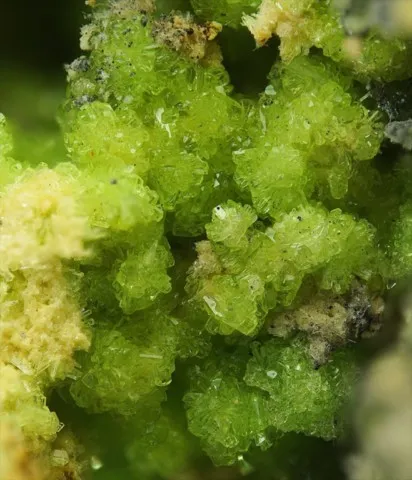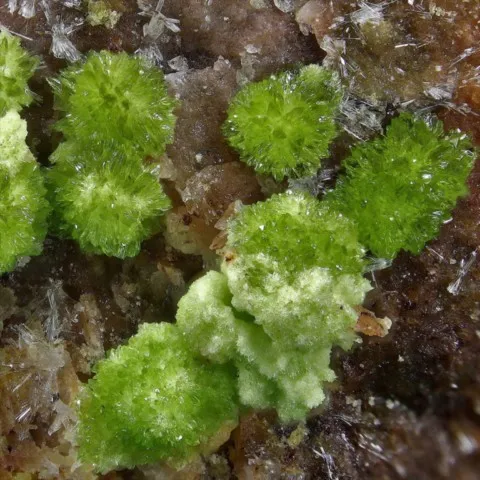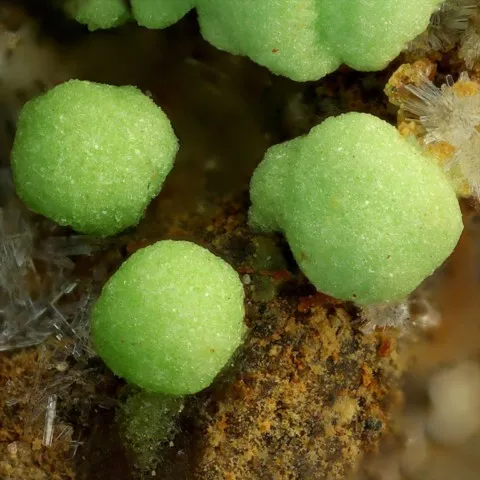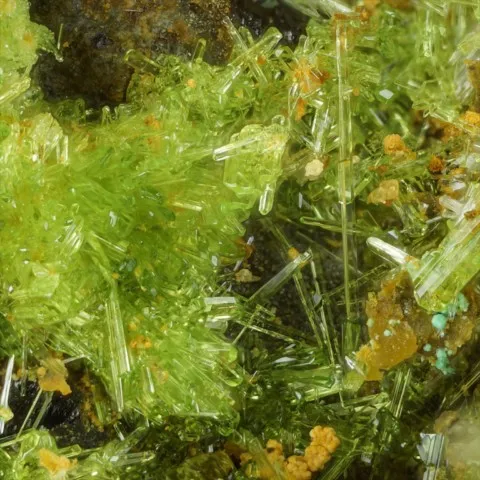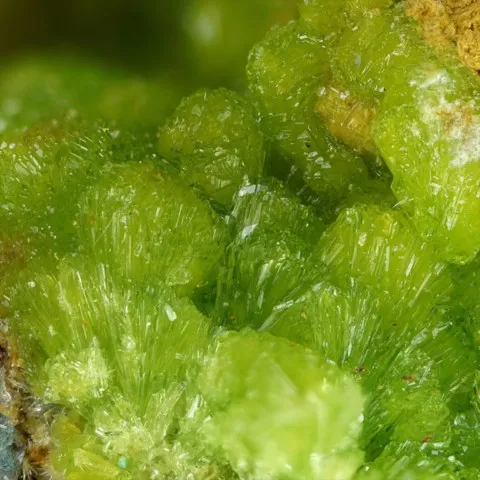JOHANNITE
Class : Sulfates, chromates, molybdates
Subclass : Hydrated sulfates
Crystal system : Triclinic
Chemistry : Cu(UO2)2(SO4)2(OH)2 8H2O
Rarity : Uncommon
Johannite is a sulfate of copper and uranium. It is a secondary mineral from the oxidation zone of copper-rich uranium deposits. Its genesis seems to derive from the oxidation of uraninite in the presence of gypsum. Its name was given to it in honor of Archduke Johann Baptiste Joseph Fabian Sebastian of Austria, founder of the Styrian Landesmuseum in Graz. Johannite forms thick tabular to prismatic crystals, spheroidal aggregates and coatings in greenish-yellow to dark emerald green color.
Main photo : Johannite from Paitzdorf, Greiz District, Germany © Stephan Wolfsried
Johannite in the World
Twinning
Twins are known around the [001] axis, and with {010} as the composition plane.
Fakes and treatments
No fakes recorded for this mineral species.
Hardness : 2 to 2.5
Density : 3.32
Fracture : Undetermined
Streak : Pale green
TP : Translucent to transparent
RI : 1.572 to 1.616
Birefringence : 0.040
Optical character : Biaxial (+/-)
Pleochroism : Strong
Fluorescence : None
Solubility : Acids, water
Magnetism : NoneRadioactivity : Strong

